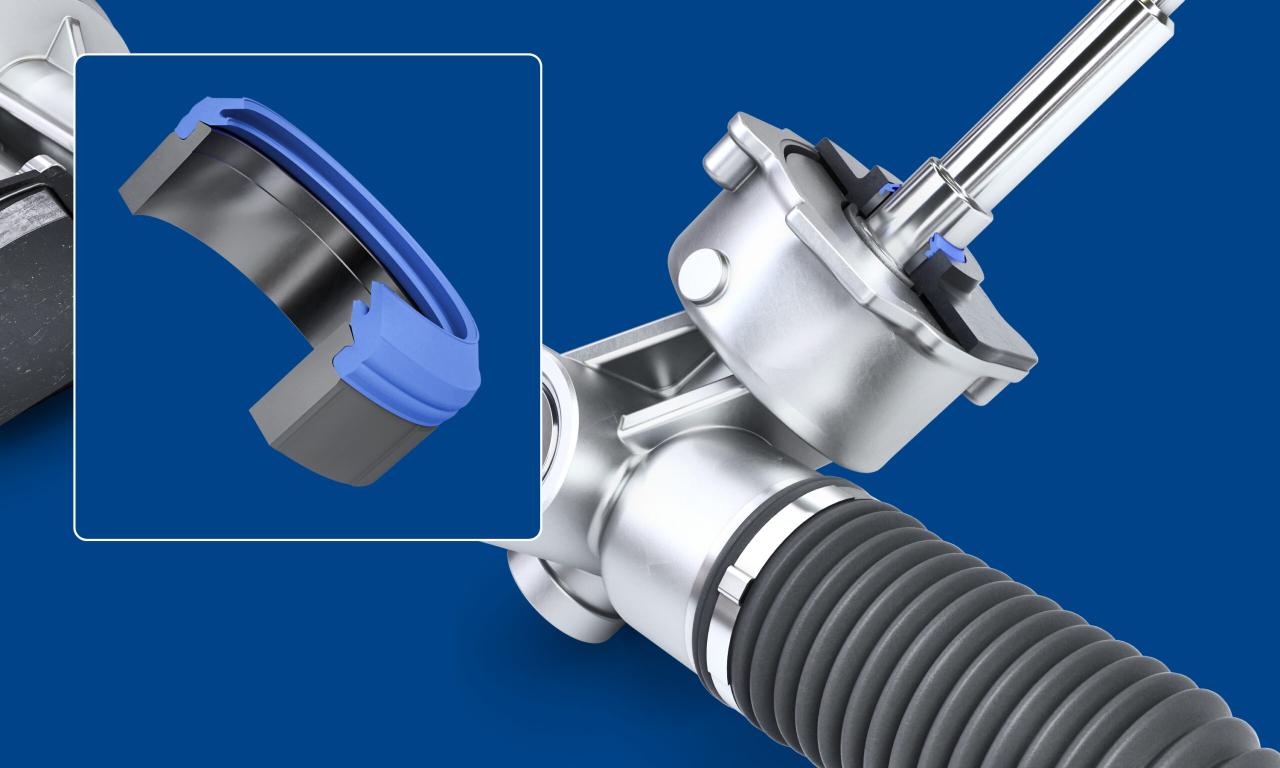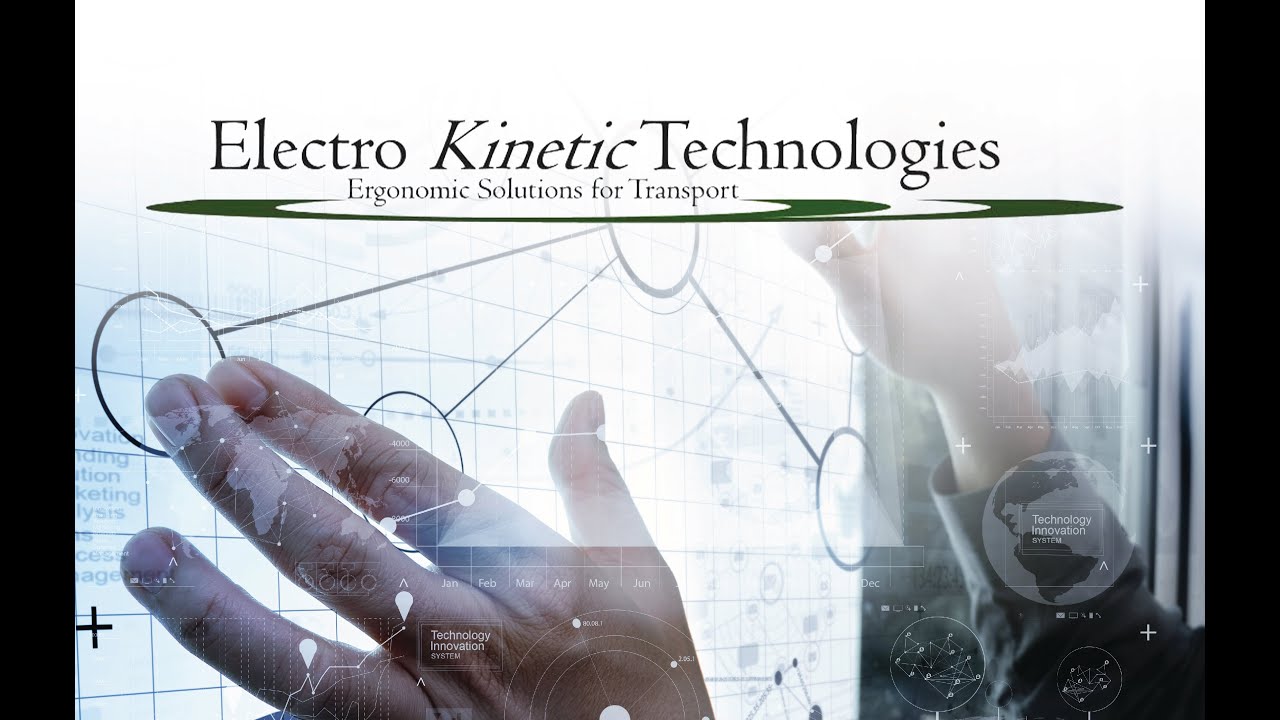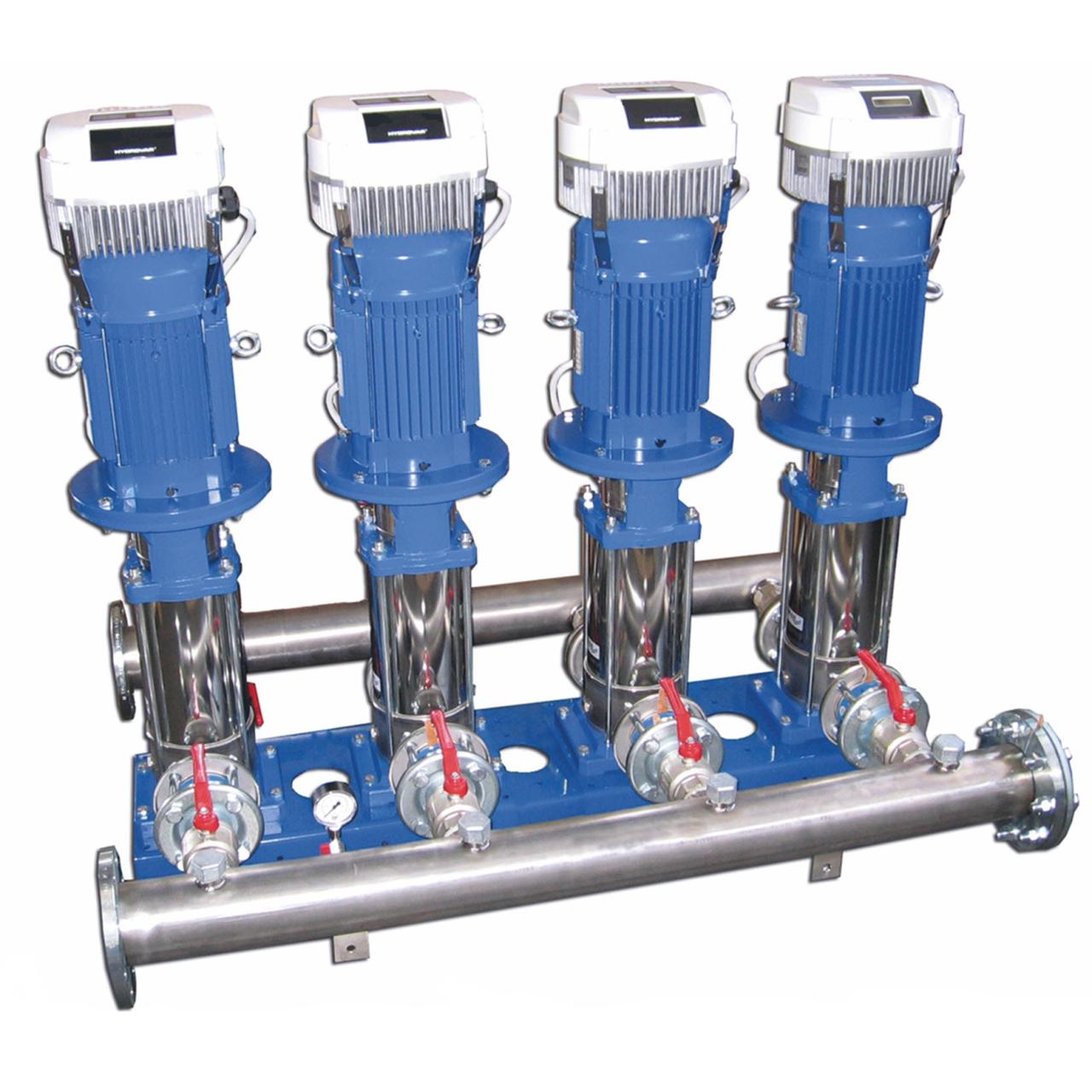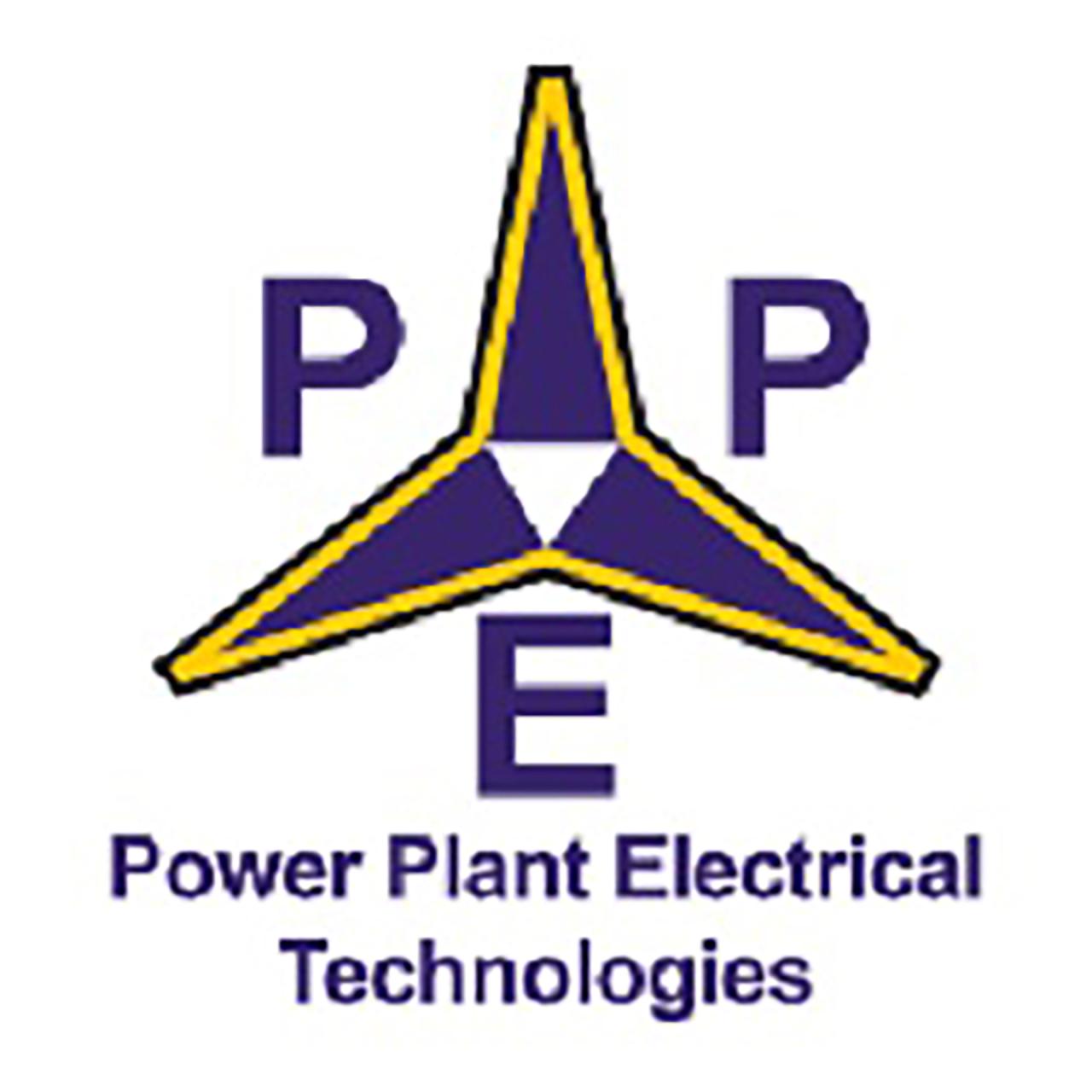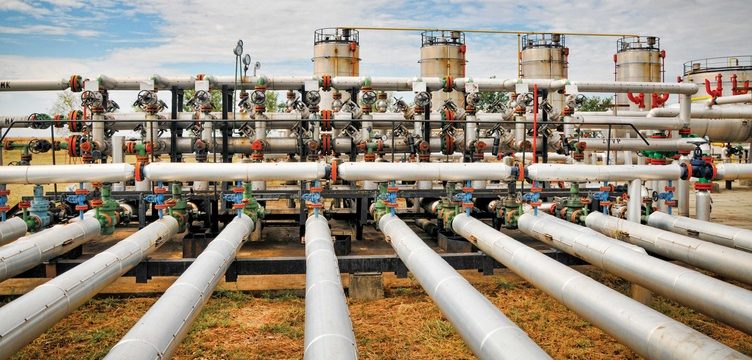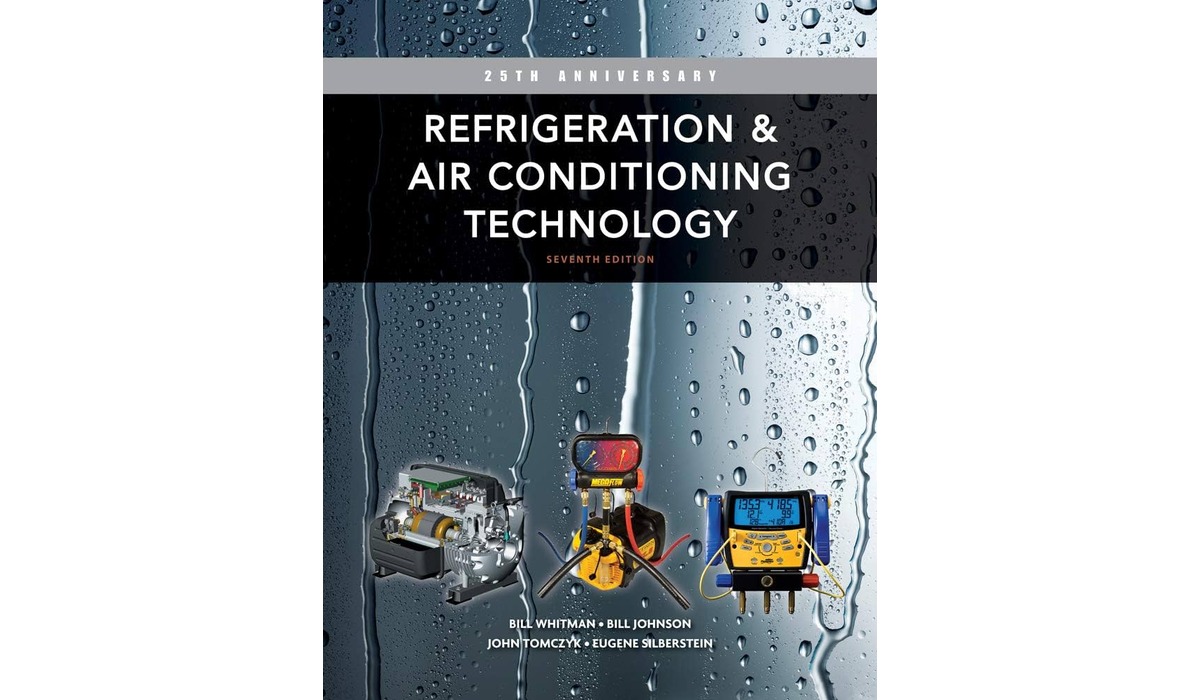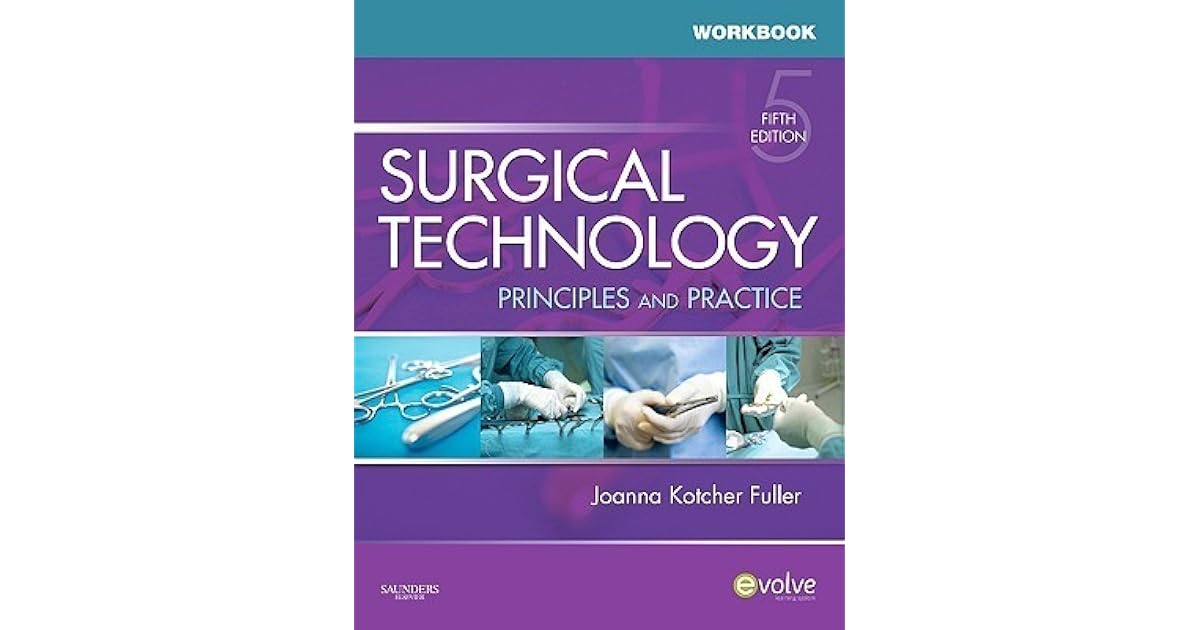Automation and Control Technologies: Shaping Modern Industries
Automation and control technologies have revolutionized industries, transforming how we manufacture, process, and manage systems. From the assembly lines of factories to the intricate workings of power plants, automation has […]
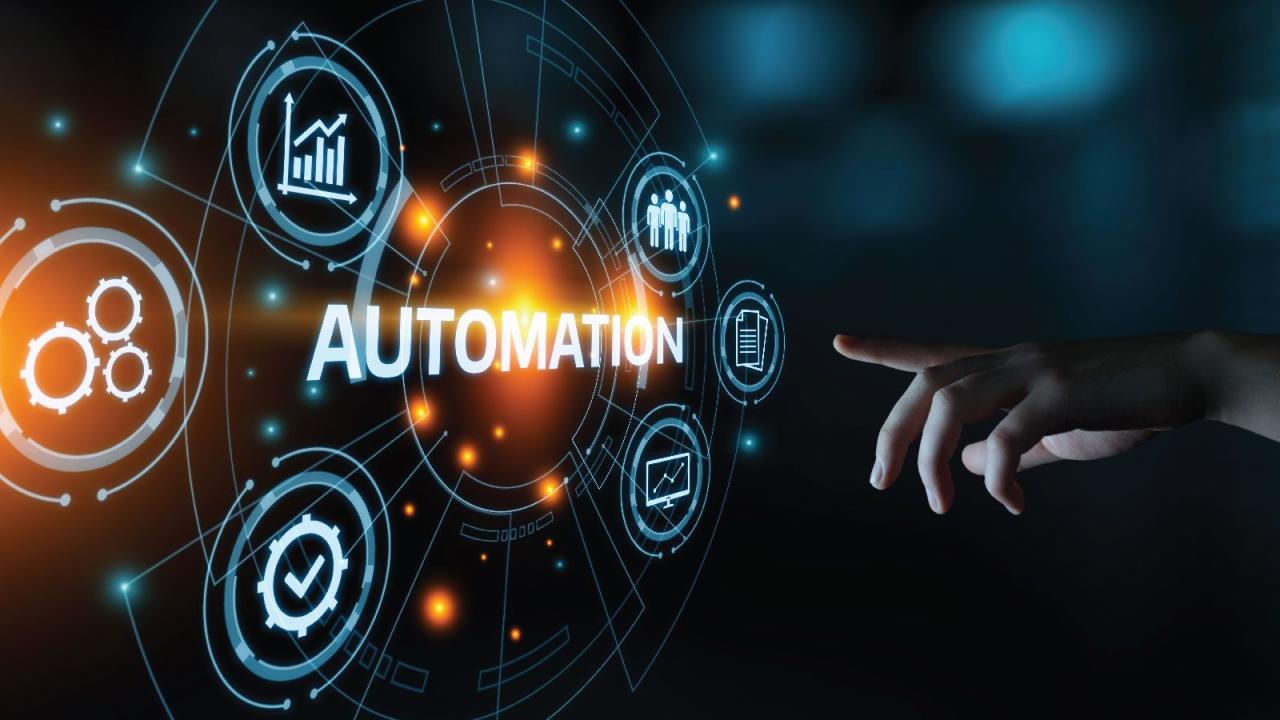
Automation and control technologies have revolutionized industries, transforming how we manufacture, process, and manage systems. From the assembly lines of factories to the intricate workings of power plants, automation has become an indispensable force, driving efficiency, productivity, and innovation.
This journey through the world of automation explores its evolution, fundamental principles, diverse applications, and the profound impact it has on our modern world. We will delve into the key components that drive these systems, analyze the benefits and challenges they present, and glimpse into the exciting future of automation and control technologies.
Evolution of Automation and Control Technologies

The evolution of automation and control technologies has been a journey marked by innovation, driven by the need to enhance efficiency, productivity, and precision in various industries. This journey has been closely intertwined with the advancements in computing power, sensing capabilities, and communication technologies, leading to a dramatic transformation in how we design, operate, and control systems.
Impact of Industrial Revolutions
The Industrial Revolutions have played a pivotal role in shaping the development of automation and control technologies. Each revolution brought with it new technological breakthroughs that significantly impacted the way industries operated.
- The First Industrial Revolution (late 1700s – early 1800s) saw the rise of mechanization with the invention of steam engines and water-powered machinery. This revolution laid the foundation for automated processes, albeit in a rudimentary form.
- The Second Industrial Revolution (late 1800s – early 1900s) witnessed the emergence of mass production and the use of electricity. This era saw the development of early control systems, such as the electric motor, which enabled more precise and efficient control of machinery.
- The Third Industrial Revolution (mid-20th century) was marked by the rise of computers and electronics. This era saw the development of programmable logic controllers (PLCs) and other advanced control systems that revolutionized automation in industries.
- The Fourth Industrial Revolution (present) is characterized by the convergence of digital, physical, and biological technologies. This revolution is driving the development of sophisticated automation systems, including artificial intelligence (AI), robotics, and the Internet of Things (IoT), enabling greater connectivity, intelligence, and autonomy in industrial processes.
Early Automation Methods
Early automation methods were primarily mechanical and relied on simple control mechanisms. These methods were often limited in their flexibility and adaptability, requiring significant manual intervention. Examples of early automation methods include:
- Mechanical cams and gears: These devices were used to control the timing and sequence of movements in machinery.
- Pneumatic and hydraulic systems: These systems used compressed air or fluids to power and control machinery, offering greater force and precision than purely mechanical systems.
- Relay logic: This method used electromechanical relays to control the flow of electricity, enabling the creation of simple control circuits.
Modern Automation Approaches
Modern automation approaches leverage advancements in computing power, sensors, and communication technologies to achieve greater levels of sophistication, flexibility, and efficiency. Key features of modern automation systems include:
- Advanced computing power: Modern automation systems rely on powerful microprocessors and embedded systems to process vast amounts of data, enabling complex calculations and real-time decision-making.
- Sophisticated sensors: Advanced sensors, such as vision systems, laser scanners, and pressure transducers, provide real-time data on process parameters, allowing for precise monitoring and control.
- Communication technologies: Networked systems and communication protocols enable seamless data exchange between different components of the automation system, facilitating distributed control and remote monitoring.
- Artificial intelligence (AI): AI algorithms are being integrated into automation systems to enhance decision-making, optimize processes, and enable predictive maintenance.
Comparison of Early and Modern Automation
| Feature | Early Automation | Modern Automation |
|---|---|---|
| Computing Power | Limited, often mechanical or analog | Powerful microprocessors and embedded systems |
| Sensors | Basic, often mechanical or electromechanical | Advanced, including vision systems, laser scanners, and pressure transducers |
| Communication | Limited, often wired connections | Networked systems and communication protocols, including wireless technologies |
| Flexibility | Limited, often requiring manual adjustments | Highly flexible, adaptable to changing conditions |
| Control Accuracy | Moderate, prone to errors | High precision, enabled by advanced sensors and control algorithms |
Fundamentals of Automation and Control Systems
Automation and control systems are the backbone of modern industries, enabling efficient, reliable, and optimized processes. These systems rely on fundamental principles of feedback control, which involve sensors, actuators, controllers, and process variables. Understanding these principles is crucial for designing, implementing, and maintaining effective automation systems.
Feedback Control Systems
Feedback control systems are the foundation of automation, allowing systems to adjust their behavior based on real-time information about the process being controlled. This section delves into the key components of feedback control systems and their roles.
Sensors
Sensors are essential for monitoring and measuring process variables. They convert physical quantities, such as temperature, pressure, flow, or position, into electrical signals that can be interpreted by the controller. Sensors provide real-time feedback about the process state, enabling the controller to make informed decisions.
Actuators
Actuators are responsible for implementing control actions based on the controller’s commands. They convert electrical signals from the controller into physical actions, such as opening or closing valves, adjusting motor speeds, or controlling heating elements. Actuators directly manipulate the process to achieve the desired setpoint.
Controllers
Controllers are the brains of the automation system, processing information from sensors and issuing commands to actuators. They use algorithms and control strategies to analyze the process variables and determine the necessary adjustments to achieve the desired outcome. Controllers can range from simple on-off controllers to sophisticated adaptive controllers capable of learning and adapting to changing conditions.
Process Variables
Process variables are the quantities that are being monitored and controlled in an automation system. They represent the state of the process and can include factors like temperature, pressure, flow rate, level, or position. Controllers aim to maintain these variables within a specific range or setpoint, ensuring optimal process operation.
Types of Control Loops
Control loops are the fundamental building blocks of automation systems. They define the relationship between sensors, controllers, and actuators, enabling the system to respond to changes in the process variables. Different types of control loops are employed depending on the specific requirements and complexity of the application.
Open-Loop Control
Open-loop control systems operate without feedback. They rely on predetermined inputs and do not monitor the actual process output. Open-loop control is suitable for simple processes with predictable behavior, but it can be unreliable if there are disturbances or variations in the system.
Closed-Loop Control
Closed-loop control systems, also known as feedback control systems, incorporate feedback from the process output. The controller compares the actual output to the desired setpoint and adjusts the control signal to minimize the error. Closed-loop control provides greater accuracy, stability, and adaptability compared to open-loop control.
Adaptive Control
Adaptive control systems are a more advanced form of closed-loop control. They use algorithms that learn and adapt to changes in the process dynamics, such as variations in load, environmental conditions, or component aging. Adaptive control systems can adjust their control parameters automatically to maintain optimal performance in dynamic environments.
Real-World Applications of Automation and Control Systems
Automation and control systems are widely used across various industries, revolutionizing production processes, improving efficiency, and enhancing safety.
Manufacturing
In manufacturing, automation systems play a crucial role in assembly lines, robotics, process control, and quality assurance. Robots perform repetitive tasks with precision, while automated systems monitor and control manufacturing processes, ensuring consistency and efficiency.
Energy
Automation and control systems are essential for managing power generation, transmission, and distribution. They enable efficient operation of power plants, optimize energy consumption, and ensure reliable electricity supply.
Transportation
Automation is transforming transportation systems, with applications in autonomous vehicles, traffic management, and logistics. Autonomous vehicles rely on sensors, actuators, and control systems to navigate roads and avoid obstacles, while traffic management systems optimize traffic flow and reduce congestion.
Healthcare
Automation and control systems are increasingly used in healthcare for monitoring patient conditions, administering medications, and managing medical equipment. Automated systems can assist healthcare professionals in providing timely and accurate care.
Building Management
Automation and control systems are used in building management for HVAC (heating, ventilation, and air conditioning) systems, lighting, security, and energy management. They optimize energy consumption, enhance comfort, and improve safety.
Types of Automation Technologies
Automation technologies have evolved to encompass various applications and techniques, each tailored to specific requirements. Understanding the different types of automation technologies is crucial for selecting the most suitable solution for a given task or industry.
Categorization by Application
Automation technologies can be categorized based on their primary application areas. Here are some of the most prominent categories:
- Industrial Automation: This category encompasses automation solutions used in manufacturing, assembly, and production processes. It involves tasks such as material handling, machine control, and quality inspection.
- Process Automation: This type of automation focuses on optimizing and controlling continuous processes in industries like chemicals, pharmaceuticals, and oil and gas. It involves monitoring and controlling variables like temperature, pressure, and flow rates.
- Building Automation: This category encompasses automation solutions used in buildings to manage energy consumption, security systems, HVAC (heating, ventilation, and air conditioning), and lighting. It aims to optimize building efficiency and comfort.
- Office Automation: This category includes automation solutions used in office environments to streamline administrative tasks, such as document processing, data entry, and communication.
Automation Techniques, Automation and control technologies
Different automation techniques are employed to achieve specific goals in various industries. Some of the most widely used techniques include:
- Programmable Logic Controllers (PLCs): PLCs are industrial computers specifically designed for automation tasks. They use a ladder logic programming language to control machines and processes based on inputs from sensors and outputs to actuators.
- Distributed Control Systems (DCS): DCSs are a more sophisticated form of automation that involves multiple interconnected controllers distributed across a plant or facility. They are commonly used in large-scale industrial processes, allowing for decentralized control and enhanced flexibility.
- Supervisory Control and Data Acquisition (SCADA) Systems: SCADA systems provide a centralized platform for monitoring and controlling large-scale industrial processes, utilities, and infrastructure. They collect data from various sources, process it, and present it to operators for decision-making.
- Robotics: Robots are programmable machines that can perform various tasks, from simple repetitive movements to complex manipulation and assembly operations. They are used in various industries, including manufacturing, healthcare, and logistics.
- Artificial Intelligence (AI): AI techniques, such as machine learning and deep learning, are increasingly being integrated into automation systems to enhance decision-making, optimize processes, and enable predictive maintenance.
Advantages and Disadvantages of Automation Technologies
Each type of automation technology has its own set of advantages and disadvantages, which must be carefully considered when selecting the most appropriate solution.
- Cost: Automation technologies can range in cost from relatively inexpensive PLCs to highly sophisticated and expensive DCSs and robotics systems. The cost must be weighed against the potential benefits and return on investment.
- Complexity: Some automation technologies, like DCSs and SCADA systems, can be complex to design, implement, and maintain. The level of expertise required for operation and troubleshooting can be significant.
- Scalability: Different automation technologies offer varying levels of scalability. PLCs and DCSs are generally scalable to meet the demands of growing production or processes.
- Flexibility: Automation technologies can provide flexibility in adapting to changing requirements or process modifications. Some technologies, like PLCs, offer greater flexibility in reprogramming and adapting to new tasks.
Key Components of Automation and Control Systems
Automation and control systems rely on a coordinated interplay of various components to achieve their intended functions. These components work together to sense, process, and act upon information, enabling systems to operate autonomously or with minimal human intervention.
Sensors
Sensors play a crucial role in automation systems by collecting data about the system’s environment or process variables. This data is then transmitted to the control system for processing and decision-making. Different types of sensors are employed based on the specific variable being measured.
- Temperature sensors: Measure temperature variations, often used in industrial processes, HVAC systems, and environmental monitoring. Examples include thermocouples, resistance temperature detectors (RTDs), and thermistors.
- Pressure sensors: Detect pressure changes in liquids or gases, used in hydraulic systems, pneumatic systems, and process control. Examples include strain gauge pressure sensors, piezoelectric sensors, and capacitive sensors.
- Flow sensors: Measure the rate of fluid flow, crucial in process control, fluid handling, and metering applications. Examples include ultrasonic flow sensors, vortex flow sensors, and magnetic flow sensors.
- Level sensors: Determine the level of liquids or solids in tanks or containers, used in storage systems, process control, and safety monitoring. Examples include ultrasonic level sensors, float level sensors, and pressure level sensors.
- Position sensors: Detect the position or displacement of objects, essential for robotics, motion control, and machine automation. Examples include potentiometers, encoders, and linear variable differential transformers (LVDTs).
Actuators
Actuators are the output devices in automation systems, responsible for executing control commands and influencing the system’s behavior. They convert electrical or pneumatic signals into mechanical motion, force, or torque.
- Electric motors: Convert electrical energy into mechanical rotation, widely used in automation systems for driving pumps, fans, conveyors, and robots. Examples include AC motors, DC motors, and stepper motors.
- Solenoids: Electromagnets that produce linear motion, used in valves, actuators, and locking mechanisms. They are known for their fast response times and simple operation.
- Pneumatic actuators: Utilize compressed air to generate linear or rotary motion, often found in industrial automation, robotics, and manufacturing processes. Examples include pneumatic cylinders and rotary actuators.
- Hydraulic actuators: Employ hydraulic fluid to generate high force or torque, commonly used in heavy machinery, construction equipment, and aerospace applications. Examples include hydraulic cylinders and hydraulic motors.
Communication Networks
Communication networks are essential for connecting different components in an automation system, enabling data exchange and control signal transmission. They facilitate information flow between sensors, actuators, controllers, and other devices.
- Fieldbus: A digital communication protocol designed for real-time data exchange in industrial automation systems. Examples include PROFIBUS, CANopen, and Modbus.
- Ethernet: A widely used networking technology that provides high-speed data transmission and is increasingly adopted in industrial automation. Industrial Ethernet standards like Profinet and EtherCAT offer deterministic communication for real-time applications.
- Wireless networks: Offer flexibility and reduced installation costs, but may have limitations in terms of data rates and reliability. Examples include Wi-Fi, Bluetooth, and Zigbee.
Applications of Automation and Control Technologies
Automation and control technologies have revolutionized various industries, enhancing efficiency, productivity, and safety. These technologies have found applications across diverse sectors, from manufacturing and process industries to transportation, agriculture, and healthcare.
Automation in Manufacturing
Automation plays a crucial role in manufacturing by streamlining production processes, reducing errors, and increasing output.
- Robotic Automation: Robots are widely used in manufacturing for tasks such as welding, painting, material handling, and assembly. Robots offer several advantages, including increased precision, speed, and consistency. They can operate in hazardous environments and perform repetitive tasks without fatigue. Examples of robotic automation in manufacturing include:
- Automotive Industry: Robots are extensively used in car manufacturing for tasks such as welding car bodies, painting vehicles, and assembling components. This automation has significantly improved efficiency and quality control in automotive production.
- Electronics Manufacturing: Robots are employed in electronics manufacturing for tasks such as component placement, soldering, and testing. This automation ensures precision and consistency in assembling complex electronic devices.
- Machine Tending: Machine tending involves automating the loading and unloading of machines, such as CNC machines, injection molding machines, and lathes. Automated machine tending systems increase productivity by minimizing downtime and maximizing machine utilization.
- Assembly Line Control: Automation technologies are used to control and optimize assembly lines. These technologies include conveyor systems, programmable logic controllers (PLCs), and sensors that monitor and control the flow of materials and products. This automation ensures smooth operation and efficient production flow on assembly lines.
Automation in Process Industries
Automation technologies are essential in process industries, such as chemical processing, oil and gas, and power generation, for optimizing operations, ensuring safety, and improving efficiency.
- Chemical Processing: Automation is widely used in chemical processing plants for controlling process variables, such as temperature, pressure, and flow rates. This automation ensures consistent product quality, minimizes waste, and enhances safety. Examples of automation in chemical processing include:
- Batch Control Systems: These systems automate batch processes, such as mixing, reacting, and separating chemicals. They ensure accurate and consistent batch production.
- Continuous Process Control: These systems control continuous processes, such as distillation, filtration, and crystallization. They ensure stable and efficient operation of continuous processes.
- Oil and Gas: Automation is used in oil and gas production, refining, and transportation. This automation optimizes production, reduces costs, and enhances safety. Examples of automation in oil and gas include:
- Well Control Systems: These systems automate well operations, such as drilling, production, and well maintenance. They ensure safe and efficient well management.
- Pipeline Control Systems: These systems monitor and control the flow of oil and gas through pipelines. They ensure efficient and safe transportation of oil and gas.
- Power Generation: Automation plays a crucial role in power generation plants, ensuring reliable and efficient power production. This automation controls processes such as boiler operation, turbine control, and power distribution.
Automation in Other Sectors
Automation technologies are finding increasing applications in various sectors, including transportation, agriculture, and healthcare.
- Transportation: Automation is transforming the transportation sector, with applications in autonomous vehicles, traffic management systems, and logistics.
- Autonomous Vehicles: Self-driving cars and trucks are becoming increasingly common, using sensors, cameras, and artificial intelligence (AI) to navigate roads and avoid obstacles. This automation promises to improve road safety, reduce traffic congestion, and enhance efficiency in transportation.
- Traffic Management Systems: These systems use sensors, cameras, and AI to monitor traffic flow and optimize traffic signals. This automation helps reduce congestion, improve traffic flow, and minimize travel time.
- Logistics: Automation is used in warehouses and distribution centers for tasks such as picking, packing, and sorting. This automation increases efficiency, reduces errors, and optimizes warehouse operations.
- Agriculture: Automation is revolutionizing agriculture, increasing efficiency, reducing labor costs, and improving yields. This automation includes precision farming, automated irrigation, and robotic harvesting.
- Precision Farming: This technology uses sensors and data analytics to optimize crop yields and minimize waste. This automation involves applying fertilizers, pesticides, and water only where and when needed, maximizing resource utilization and minimizing environmental impact.
- Automated Irrigation: This technology uses sensors to monitor soil moisture and automatically adjust irrigation systems, ensuring optimal water usage and preventing overwatering or underwatering. This automation helps conserve water and reduce water waste.
- Robotic Harvesting: Robots are being used to harvest crops, reducing labor costs and improving efficiency. This automation is particularly useful for harvesting delicate crops, such as fruits and vegetables, where human labor can damage the product.
- Healthcare: Automation is playing an increasingly important role in healthcare, improving efficiency, accuracy, and patient care. This automation includes medical imaging, drug dispensing, and robotic surgery.
- Medical Imaging: Automation is used in medical imaging equipment, such as CT scanners and MRI machines, to improve image quality and reduce processing time. This automation enhances diagnostic accuracy and improves patient care.
- Drug Dispensing: Automation is used in pharmacies to dispense medication, reducing errors and improving efficiency. This automation ensures accurate and timely medication dispensing, improving patient safety and satisfaction.
- Robotic Surgery: Robots are used in surgery to assist surgeons in performing complex procedures with greater precision and accuracy. This automation allows for minimally invasive surgery, reducing recovery time and improving patient outcomes.
Benefits and Challenges of Automation
Automation has become a defining force in industries worldwide, revolutionizing how businesses operate and interact with their customers. This widespread adoption has brought about significant benefits, but it has also introduced challenges that require careful consideration and proactive management.
Economic Benefits of Automation
Automation offers numerous economic advantages that can drive growth and efficiency. These benefits include:
- Increased Productivity: Automation can significantly boost productivity by eliminating repetitive tasks and enabling machines to work tirelessly without breaks. This allows businesses to produce more goods or services with the same or fewer resources. For instance, in manufacturing, automated assembly lines can produce products at a much faster rate than manual labor, resulting in higher output and increased profits.
- Reduced Costs: By automating tasks, businesses can lower labor costs and reduce the need for human intervention. Automation can also minimize errors, leading to less waste and rework. For example, automated inventory management systems can optimize stock levels, minimizing storage costs and reducing the risk of stockouts.
- Improved Quality: Automation can enhance product quality by ensuring consistency and precision in manufacturing processes. Machines can perform tasks with greater accuracy and repeatability than humans, reducing the potential for defects. For instance, in pharmaceuticals, automated dispensing systems ensure accurate medication dosages, minimizing errors and improving patient safety.
Impact of Automation on Workforce Dynamics
The rise of automation has sparked debates about its impact on employment. While automation creates new job opportunities in areas like robotics engineering and data analysis, it can also lead to job displacement in industries where tasks can be automated.
- Job Displacement: Automation can displace workers in sectors where tasks are repetitive or require low-skill levels. For example, in manufacturing, automated robots are increasingly replacing manual labor on assembly lines.
- Need for Reskilling: The changing job landscape necessitates reskilling and upskilling to adapt to the demands of an automated workforce. Workers need to acquire new skills in areas like data analysis, programming, and robotics to remain competitive. For instance, individuals working in traditional manufacturing roles may need to learn about robotics and automation to transition to new positions within the industry.
Ethical Considerations of Automation
As automation becomes more prevalent, it raises ethical considerations that need careful attention.
- Data Privacy: Automation systems often collect and process vast amounts of data, raising concerns about data privacy and security. Businesses need to ensure that data is collected and used responsibly and ethically, complying with data protection regulations. For example, in healthcare, automated systems must handle patient data securely and with appropriate consent, safeguarding sensitive medical information.
- Cybersecurity: Automated systems are vulnerable to cyberattacks, which can disrupt operations and compromise sensitive data. Businesses need to implement robust cybersecurity measures to protect their systems from malicious actors. For example, automated manufacturing systems should be protected by firewalls and intrusion detection systems to prevent unauthorized access and data breaches.
- Bias in Decision-Making Systems: Automated decision-making systems can perpetuate existing biases if they are trained on data that reflects societal prejudices. This can lead to unfair or discriminatory outcomes. For example, automated hiring systems should be carefully designed and monitored to ensure they do not discriminate against certain groups based on factors like race, gender, or age.
Future Trends in Automation and Control
The field of automation and control is constantly evolving, driven by advancements in technology and the growing demand for efficiency and productivity across various industries. Emerging technologies are transforming the landscape, leading to new possibilities and applications for automation and control systems.
Artificial Intelligence (AI) and Machine Learning (ML) in Automation
AI and ML are revolutionizing automation by enabling systems to learn from data, adapt to changing conditions, and make intelligent decisions. AI-powered automation systems can analyze vast amounts of data, identify patterns, and optimize processes in real-time.
- Predictive Maintenance: AI algorithms can analyze sensor data from machines to predict potential failures, enabling proactive maintenance and reducing downtime. For example, in manufacturing, AI can monitor the performance of equipment and predict when a component might fail, allowing for scheduled maintenance before any disruption occurs.
- Process Optimization: AI can optimize production processes by analyzing real-time data and identifying bottlenecks. By adjusting parameters and resource allocation, AI can significantly improve efficiency and reduce waste. For instance, in logistics, AI can optimize delivery routes, reduce transportation costs, and ensure timely delivery of goods.
- Quality Control: AI-powered vision systems can inspect products for defects, ensuring high quality and consistency. This can significantly reduce the need for manual inspection, which is often time-consuming and prone to human error. For example, in food processing, AI can identify defects in fruits and vegetables, ensuring that only high-quality products are packaged and shipped.
Cloud Computing and Automation
Cloud computing provides a scalable and flexible platform for deploying and managing automation systems. It allows businesses to access powerful computing resources on demand, without the need for significant upfront investments in hardware and infrastructure.
- Remote Access and Control: Cloud-based automation systems can be accessed and controlled from anywhere with an internet connection, enabling remote monitoring and management of operations. This is particularly useful for geographically distributed facilities or operations that require constant oversight.
- Data Storage and Analytics: Cloud platforms offer secure and scalable data storage solutions, enabling businesses to collect and analyze vast amounts of data from automation systems. This data can be used to improve decision-making, optimize processes, and identify areas for improvement.
- Software Updates and Upgrades: Cloud-based automation systems can be easily updated and upgraded, ensuring that businesses have access to the latest features and functionalities. This eliminates the need for manual updates and reduces the risk of downtime due to outdated software.
Automation in Smart Manufacturing and Industry 4.0
Smart manufacturing and Industry 4.0 are characterized by the integration of automation, data analytics, and connectivity. Automation plays a crucial role in enabling these advancements, driving efficiency, productivity, and innovation in manufacturing processes.
- Cyber-Physical Systems (CPS): CPS are systems that integrate physical processes with digital technologies, enabling real-time monitoring, control, and optimization of manufacturing operations. Automation plays a critical role in connecting physical assets, such as machines and robots, with digital systems, facilitating data exchange and intelligent decision-making.
- Robotic Process Automation (RPA): RPA uses software robots to automate repetitive tasks, freeing up human workers for more complex and value-added activities. In manufacturing, RPA can be used to automate tasks such as data entry, order processing, and inventory management.
- Advanced Robotics: Collaborative robots (cobots) are designed to work alongside human workers, enhancing productivity and safety. Automation technologies are enabling the development of more sophisticated robots with advanced capabilities, such as machine vision, object recognition, and path planning.
Automation and the Internet of Things (IoT)
The IoT is connecting devices, machines, and systems to the internet, creating a vast network of interconnected objects. Automation technologies are essential for managing and controlling this interconnected ecosystem.
- Smart Homes and Buildings: Automation technologies are enabling smart homes and buildings that can adjust temperature, lighting, and other parameters based on user preferences and real-time conditions. This not only enhances comfort but also reduces energy consumption and operational costs.
- Smart Cities: Automation and control technologies are being used to optimize traffic flow, manage energy consumption, and improve public safety in smart cities. For example, automated traffic management systems can adjust traffic lights based on real-time traffic conditions, reducing congestion and improving traffic flow.
- Precision Agriculture: Automation and IoT technologies are enabling precision agriculture, where sensors and data analytics are used to optimize crop yields and resource utilization. Automation systems can control irrigation, fertilization, and other agricultural processes based on real-time data, maximizing efficiency and sustainability.
Epilogue
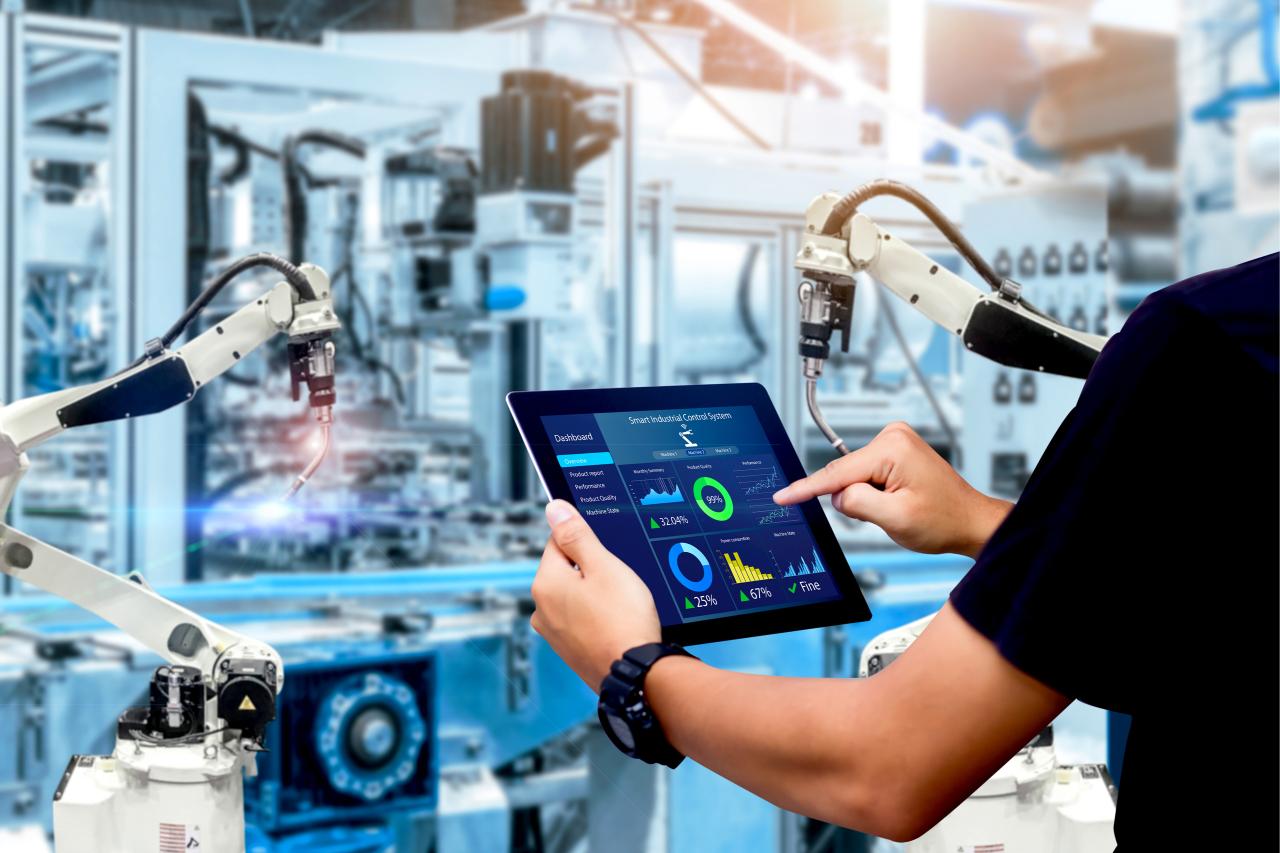
As we stand at the cusp of a new era defined by intelligent machines and interconnected systems, automation and control technologies continue to evolve at a rapid pace. The future holds immense possibilities for these technologies to further reshape our world, offering solutions to complex challenges and unlocking new frontiers of innovation. Understanding the fundamentals of automation and its potential will be crucial in navigating this exciting and transformative journey.
Automation and control technologies are revolutionizing various industries, from manufacturing to healthcare. In the medical field, advancements like softwave tissue regeneration technology are changing the way we approach healing and recovery. This technology utilizes precise control and automation to stimulate tissue regeneration, offering promising solutions for a wide range of conditions.
As automation and control technologies continue to evolve, we can expect even more innovative applications in healthcare and beyond.
